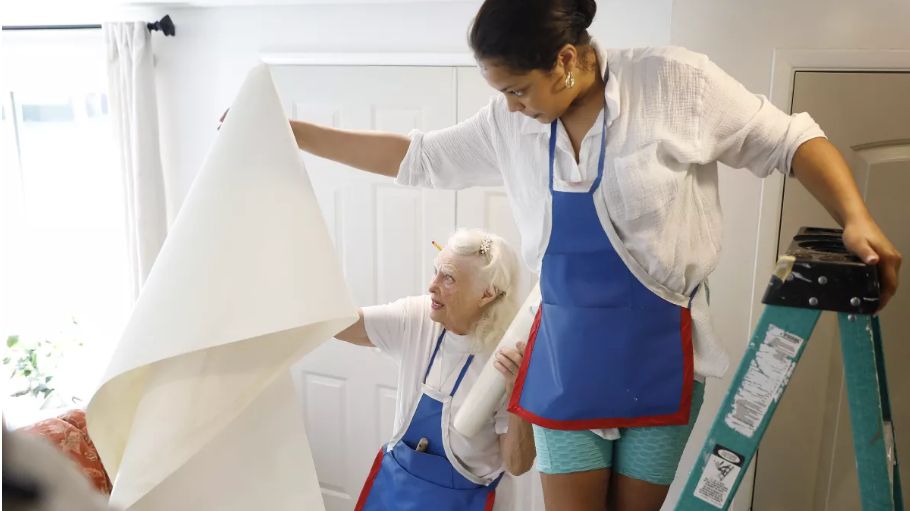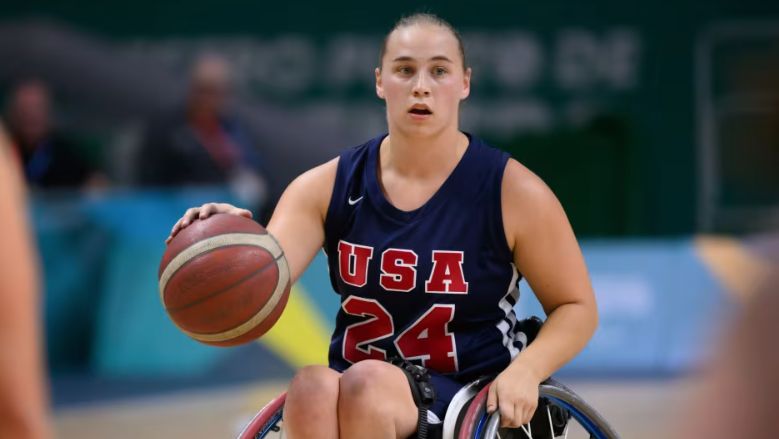The University of California, Los Angeles women's gymnastics team has blown audiences away with their routines, many of them going viral. The secret weapon behind the team's viral videos is BJ Das.
BJ began competing when she was just six years old, but her career ended when she suffered a torn Achilles competing at the University of Washington.
What You Need To Know
- The UCLA women's gymnastics team has blown audiences away with their routines, many of them going viral. The secret weapon behind the team's viral videos is BJ Das
- Das began competing when she was just 6 years old
- Her career ended when she suffered a torn Achilles competing at the University of Washington
- Since 2019, she's been a volunteer coach at UCLA, and even though Das trains the gymnasts to have a good floor routine, her biggest goal is for them to be happy when performing
She transitioned to dancing, and has performed with some of the biggest names in music including Beyonce, Pink, and Usher. Since 2019, she has been a volunteer coach at UCLA.
Das joined Spectrum News 1 anchor Lisa McRee on LA Times Today with more.
Part of what makes the videos go viral is the dancing that is involved in the floor routine.
"Dance has always been a part of floor routines but it has been more like poses in between moves and what ties the tumbling and leaps together. A lot of it has stemmed from ballet and has become its gymnastics dance style, which is very posy and a little more simple. So it has really evolved over the years," Das said.
Das is often on the sidelines dancing along with the gymnasts who are performing. She does that to help them with choreography and to excite them up.
"I am a stickler on timing when it comes to the music. Part of the reason why I do this is because we do not have audiences in Pauley Pavilion this year due to COVID. So, the whole team is on the sidelines—which they always are—and now the coaches are joining in, and we are all trying to make it this high-energy environment. So I am on the sidelines full out because I want to give the girls as much energy as possible,” she said.
One of the recent viral performances was by Nia Dennis, who wanted to highlight Black culture.
"That was the message she wanted to get across—Black Lives Matter and Black excellence—and she wanted to inspire people. As you know, gymnastics has been a very diverse sport in the past. I think slowly, but surely, diversity and inclusivity have been encouraged, and she really wanted to get that across. She named the routine "the culture" and wanted to highlight Black artists, empowering Black culture, and she wanted to bring her whole authentic self to the choreography. I was just there helping her do it. It started with the music and using meaningful Black artists who have a message, and her being able to weave that together with her amazing tumbling and dance moves," Das added.
There has been a history of UCLA gymnasts that have gone viral.
"Under Valerie Kondos Field, there was Sophina DeJesus who used some viral dance moves in her routine. I think she used the "Whip/Nae Nae" and things like that. Then we have Hallie Mossett, who did a Beyoncé when the "Formation" album came out. Then we have Katelyn Ohashi, who did a Michael Jackson tribute and then moved into a girl-power type of thing with Tina Turner, Janet Jackson, and many legendary artists. Then we had Nia last year. But we also have some legendary floor workers who maybe have not gone viral but have gotten a lot of views, and I hope the world can see everyone on the team because they are all great," Das said.
Das's experience as a dancer has helped shape the way the gymnasts perform.
"Over the years, I have learned how to play to the camera and also play to a wide arena. I always encourage them to dance larger than life. I think many of them have not had a lot of formal dance training, and what I have learned is to dance bigger than myself. A lot of it is using your face, using your eyes, using a full range of your body, and I train them to keep pushing themselves in that way. Another thing is exuding confidence, and so I want them to be confident when they are on the floor, and hopefully, that will also carry into their life off the floor."
Even though Das trains the gymnasts to have a good floor routine, her biggest goal is for them to be happy when performing.
"To me, happiness is the key to be successful. I think anyone who is joyful and happy in what they are doing is naturally going to be more successful. I know that our athletes perform their best when they are happy. For me, dance brings me so much joy; I think that for a lot of the team, they have jumped on that bandwagon. It is a fun way for them to get out of their heads, like take a little break from the tough conditioning and training that they do, and loosen up and have a good time. I think it brings them to a place of joy, and I think that helps their gymnastics."











